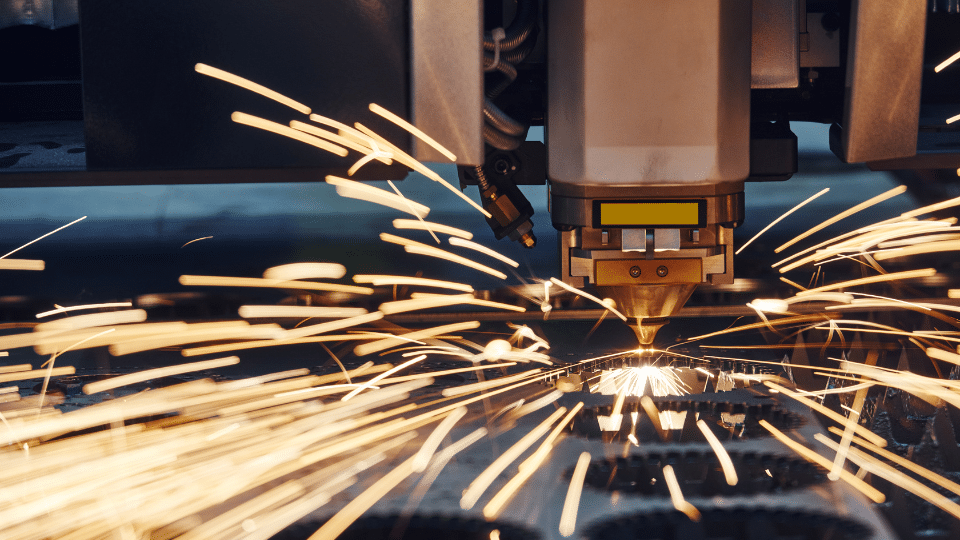
In an era where American manufacturing is facing the harsh reality that it, for too long, has relied on offshoring, Ford Motor Co. is breaking ground on multiple sites to produce electric vehicles from start to finish in the United States. The carmaker’s BlueOval City campus in Tennessee and its two BlueOval SK Battery Parks in Kentucky “will produce the next generation of electric F-Series trucks and the batteries to power future electric Ford and Lincoln vehicles,” according to a Ford press release.
What is being billed as “the largest ever U.S. investment in electric vehicles at one time by any automotive manufacturer,” Ford’s $11.4 billion investment will create nearly 11,000 new jobs, including jobs for welders and other skilled tradesmen. Understanding the challenges of finding skilled labor, Ford will rely on sophisticated automation systems to produce its next fleet of EVs.
This article, however, is not aimed at the Ford automation team planning Blue Oval City. Certainly, there will be plenty of robotic welding done at the new plant both for vehicle bodies and for battery construction, but Ford’s automation team has automated its high-volume operations numerous times before.
The focus of this article, therefore, will be to contrast Ford’s task of automating high-volume work with the work that is typically done at low-volume, high-mix metalworking job shops and contract manufacturers. These businesses serve numerous customers, operate in multiple industries, and make parts and assemblies that often require not only welding but also cutting, forming, milling, and finishing. They, too, understand the challenges of finding skilled labor, but are faced with the complex task of determining the ROI of automation for an ever-changing product mix.
Realities of ROI
To determine automation ROI on a Ford production line, the planner needs to deal with relatively predictable variables, such as welding structural members of a steel frame, the
number of frames coming down the line, time to complete the welding, materials and energy consumed as well as the cost of the robot plus installation and programming. Additionally, downtime and maintenance are accounted for.
This data can then be fed into a software program along with data for all the other cost inputs and compared with the potential revenue from the sale of the trucks to determine the anticipated return on investment. It can also be compared with the cost of the same operations performed with human labor to evaluate whether the automation investment should be made.
Now, compare that challenge with the plight of a shop owner in a high-mix environment. In theory, each of these calculations could be conducted for every part that the shop may need to produce at some point in the future. But that’s clearly an impossible task for the typical high-mix shop. Surely, there’s a simpler way to do it, right? The robot salesman sure made it seem that way.
According to the salesman, his robot replaces two workers, costs $2.40 an hour fully amortized and will save an investor $100,000 per year. While that may sound simple, there is much left unaccounted for. Think about the shop with a robot gathering dust in a corner or a full robotic cell in use only 30 percent of the time while manual stations nearby are putting in overtime. In these instances, one can be fairly certain that the robot salesman’s calculations did not assume inevitable downtime.
Why automate?
Ask any manufacturing professional what their top pain point is in today’s environment and the resounding answer is always finding skilled workers, particularly welders. When reminded that automation can be part of the solution, it’s natural for these same professionals to question whether it’s the right solution for their specific operation.
While it’s easy to identify challenges that may indicate a robot isn’t necessary for a particular situation, let’s start with some of the reasons a shop owner fails to address the issue of automation at his peril. But let’s not start with the cost involved, though there certainly may be significant cost savings in deploying an automation solution appropriate to a fabricator’s specific needs. Other factors, however, are likely to be more important to the ultimate decision.
- Labor availability concerns are not going away. Face it, a lot of welders have been at it for decades, and while they’re great at what they do, they deserve to retire at a reasonable age. As they exit the workforce, there just aren’t enough teens and 20-somethings anxious to commit their time to a weld shop. For those that are willing to work at a weld chose, they might prefer working in an advanced-technology capacity. Think about the kid who’s grown up with her iPad and smartphone welded to her brain. For her, programming a robot will come naturally while drawing a MIG bead day in and day out might not.
- Quality drives margins. The most demanding customers in industries like aerospace are not going to accept anything less than perfection and in many cases such consistency is only possible with a robot. China boasts one of the world’s highest levels of industrial automation, not because they have too few workers, but because many global customers require quality levels that only automation can provide.
- Competition may give you no choice. That new “whale” customer may be offering the most interesting work seen in years, but if a fabricator can’t gear up to get the work out, someone else will.
- Cost savings from automation can, in fact, be significant. When owners want to sell their businesses, they, of course, want the highest valuation possible. Companies sell based on a multiple of earnings before interest, taxes, depreciation and amortization (EBITDA). Depending on company size, margins, industries served, customer relationships and a myriad of other factors, precision metalworking companies sell for EBITDA multiples ranging from the mid to high single digits and even more for very large firms with great margins that service hot industries like aerospace, automation and medical. The market will determine the multiple, and while business owners can affect that a bit with a well-executed and aggressive auction process, one method that can make a big difference in value is by increasing one’s margins. A shop with EBITDA margins in the low teens will carry a lower multiple than one with profits approaching 20 percent. If a shop has $1.2 million in EBITDA on a 12 percent EBITDA margin, increasing profits to 18 percent would add $600,000 to the bottom line. Assuming just a 1x improvement in the sale multiple and no growth, that move might add almost $5 million to the value of a shop – or far more than the automation investment required to bring about that transformation. And the likelihood is that a newly automated, highly efficient shop will grow, adding even more value through revenue growth and potentially through additional multiple expansion.
So what could go wrong?
But the decision to automate isn’t a slam dunk for everyone, particularly in the high-mix, low-volume context. Some of the factors that need to be considered include:
- Do you have existing tasks suitable for automation? If your best welders toil day in and day out on the same or very similar assemblies, the decision to automate is a much easier one. Automate those routines and redeploy your human talent to more complex, higher margin work.
- If you’re considering an automation investment to support a promising new product, what’s the level of certainty that you’ll get the business or that actual purchase orders will hit the predicted production levels? It’s not going to be fun to spend $250,000 on an automation investment only to read that your big new customer has just agreed to a merger and is suspending new plant investments for at least a year.
- Are your manufacturing execution and quotation systems sufficiently robust to optimize the new investment? Without good information, it will be difficult to accurately evaluate the ROI of the investment.
- Does the proposed solution address all aspects of the production process? Eliminating a welder won’t generate the anticipated savings if the robot still needs a human loader to tend the process.
- Do you have staff capable and willing to support the new automated environment? This is a biggie. Imagine a plant tour where the owner proudly shows off his brand-new five-axis mill, but when asked about the impressive tool changer, he looks a bit sheepish when commenting, “I don’t understand it and I haven’t been able to convince my guys to give it a try.” A buyside client would exit that tour in no time flat, and, of course, there would be no offer forthcoming.
With 30 years in M&A investment banking advisory services, Focus Investment Banking LLC knows these situations all too well and is committed to helping its clients avoid them. To carry on that commitment, tune in next month for a second installment on the critical decision to automate.
As a teaser, the second installment will address how you as an owner can weigh these and other factors in the balance to make a go or no-go decision on automation. Expect coverage on the critical importance of great management information and manufacturing execution systems to drive smart pricing decisions, scheduling and other make-or-break factors. Furthermore, there will be focus on how to put your welding automation investment in context with the broader opportunities to automate other aspects of your plant, including other technologies such as milling, cutting and bending that may be equally important to your successful automation journey.
This article was previously published at Welding Productivity.














